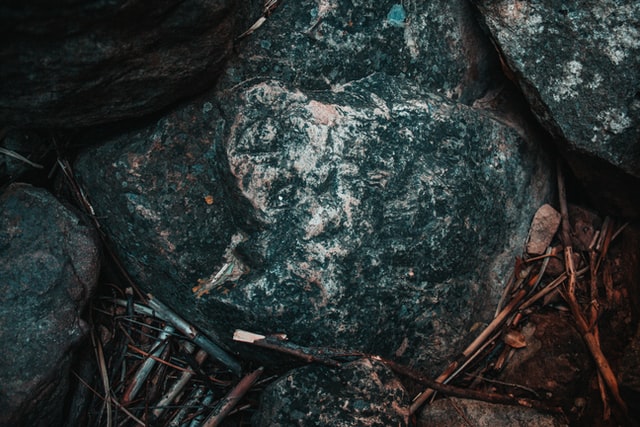Burma, since 1989 likewise called Myanmar, is celebrated for different things and jade is certainly one of them. Certainly, this article is about Burmese jade however when composing (and representing that matter) about jade, all in all, and Burmese jade, specifically, it is basic to incorporate China for in addition to the fact that china is the world's biggest market for jade it played and still assumes a vital part concerning the point Burmese jade, and that in more than one way.
Chinese were quick to mine jade in China starting from about 6.000 BC., and that at an exceptionally enormous scope to satisfy the solid homegrown need, which is reasonable by the way that China has a jade product culture and Chinese are spellbound by this stone. They were additionally the justification the start of the main enormous scope mining and exchanging Burma that occurred in light of expanding interest for jade - all the more correctly stated jadeite - during the Ming Dynasty (1368 to 1644). In those days Jade was exchanged to China through Yunnan by means of train exchange. Not exclusively are the Chinese now as ever the by a long shot biggest purchasers of Burmese jade (up to 75 percent of the all out creation) yet they do likewise run the greater part of the significant jade mining, handling and exchanging activities Burma's jade industry subsequent to winning concessions from the Burmese government. This clarifies certain why I am saying that China played and still assumes a vital part associated with the point jade in Burma.
Jade exchange Burma, which traces all the way back to the Pyu, has till the fourteenth century occurred on a fairly limited scale. The justification this was that neither the Pyu nor any individuals (Kachin, Shan, and so on) hindering the zones being referred to ascribed in opposition to the Chinese any monetary as well as social worth to jade. What's more, it is most importantly the last that makes jade so exceptionally pursued. At the end of the day, it is superstitiousness that makes jade so important and not jade itself for jade is not really reasonable for being worn exclusively for issue of beautification.
In Chinese culture jade assumes an extremely unmistakable position for the Chinese append heavenly powers to jade. Instances of this are that the wearer of jade is as they accept secured against calamity, that wearing jade capacities as such a 'early admonition framework' on the grounds that the jade will just before a terrible occasion break and that favorable luck lays ahead is proclaimed by the jade's showing up more splendid and clear of course. That a lot to the in China mainstream views related with jade. Good gracious, stand by, here is another model that I do by and by like without a doubt. It was accepted that utilizing opium pipes with mouthpieces made of jade would offer life span on opium smokers.
Up to the thirteenth century jade was to Chinese jade carver inseparable from nephrite. Notwithstanding, after the disclosure that green jade of a distinctive green and splendor never seen (jadeite) happened in north Burma had been made, this risked. After a short time the Chinese eminences and world class fell profoundly enamored with this new sort of jade. The quest for the wellspring of this delightful jade was on. It took the Chinese seemingly forever and countless Chinese who paid with their lives for the fantasy of a daily existence in wealth to discover where precisely this jade came from.
In the accompanying I give you a passage from William Griffith's 'Diaries of Travels in Assam, Burma, Bootan, Affghanistan, and the Neighboring Countries' depicting the a.m.
"The jade stone or nephrite has been known in China from a time of high vestige. It was found initially in Khoten and different pieces of Central Asia, and being of a splendid white tone and expensive, it was held in high regard as symbolical of immaculateness in private and official life. The green assortment of the stone appears to have been amazingly uncommon, yet not altogether obscure, for endeavors are recorded to create its tone misleadingly by covering white jade in juxtaposition with copper. The disclosure that green jade of fine quality happened in Northern Burma was made inadvertently by a little Yunnanese broker in the thirteenth century. The story runs that on getting back from an excursion across the boondocks he got a piece of stone to adjust the heap on his donkey. The stone end up being jade of incredible worth and a huge gathering returned to secure a greater amount of it. In this task they were ineffective, no one having the option to educate them where the stone happened. Another endeavor, similarly unbeneficial, was made by the Yunnan Government in the fourteenth century to find the stone; every one of the individuals from the campaign, it is said, died by jungle fever, or because of unfriendly slope clans. From this time onwards, for a few centuries, no further investigation in the jade nation appears to have been embraced by the Chinese. Little bits of the stone at times discovered their way across the wilderness, yet the specific wellspring of the stock proceeded with obscure.
The year 1784 imprints the last end of an extended arrangement of threats among Burma and China, and from this time dates the kickoff of an ordinary exchange between the two nations. Gutsy groups of Chinese in a little while found that the jade-creating areas lay on the correct bank of the Uru River, and a little yet normal stock of the stone was presently passed on consistently to Yunnan.
Unfeasible streets, a malarious environment, and an agitated nation forestalled the development of the exchange. About twenty or thirty Chinese at the most went up into the jade nation each season and a little extent of these consistently returned. In the Chinese sanctuary at Amarapura is a considerable rundown containing the names of as much as 6,000 Chinese merchants perished in Burma since the start of the current century to which memorial service customs are yearly paid. The vast dominant part of these men are known to have lost their lives in the quest for jade. The roll incorporates just the names of notable and significant merchants. Could the quantity of more modest brokers and swashbucklers who died in a similar endeavor be learned, the rundown would be expand to commonly its current size. Dr. William Griffith was the principal European to really visit the mines in 1837."
Here is a short depiction of the various types of jade. What is regularly called jade does really allude to two unique minerals/jewels, to be specific nephrite and jadeite. The distinctive mineralogical and synthetic creations convert into contrasts in shading, hardness, clarity and surface. Nephrite, which is substantially more typical than jadeite is made of delicate calcium and magnesium silicate. Jadeite, the harder jade assortment is made out of aluminum and sodium silicate
The gentler assortment, nephrite, has a hardness of 6 - 6.5 on the Mohs scale (from 1 to 10) and its surface is yielding moderately simple to shaper apparatuses used to cut and chisel jade. Along these lines the nephrite is utilized to create pieces with exceptionally complex surface enhancement, which is profoundly esteemed particularly in China where jade isn't only something to bring in cash with and ideal to take a gander at but since of the legendary forces ascribed to jade a significant piece of not exclusively individuals' lives yet in addition existences in the wake of death. Incredibly guilefully cut Funerary objects of jade uncovered from regal burial places give a great exhibit of this. Against the foundation that nephrite is utilized to create delightful jade carvings one can legitimately say that it is the creativity of the cutting that is deciding the worth and not the jade.
Lower characteristics of nephrite (utility jade) are utilized to make dinnerware, plate, tea sets, puppets and inside enhancing extras.
With respect to the shading, admirably indeed, what might be said about the shading? The primary thing that springs up before our inner being the point at which we hear the word 'jade' is a green piece of stone. Green? Why green? Since jade is consistently green, or right? Jade happens in six characteristic tones: green, lavender, red, yellow, white (the rich white is in China known as 'lamb fat') and dark (which is really an exceptionally dim green). In any case, concerning colors is likewise to separate among nephrite and jadeite.
The shading range for nephrite isn't close to as wide with respect to jadeite and is generally portrayed by a specific bluntness of shading and waxiness of surface.
The harder assortment, jadeite, has a hardness of 6,5 - 8 (in uncommon case even up to 9 what makes it as hard as rubies) on the Mohs scale and its surface is safe to shaper device made of steel and amazingly hard to cut. That the cutting of one of the bigger jade articles for example Chinese sovereignties took more than the lifetime of one craftsman (in some cases 2 and that's just the beginning) may give you a thought of that. In this manner jadeite is essentially used to create extravagant gems. What's more, it is this high-grade nature of jade Burma is renowned for.
Like nephrite jadeite shows up in six fundamental tones yet with numerous varieties. Likewise, jadeite comes in substantially more clear green tones, better surface and a more significant level of clarity than nephrite jade. The normal tones are green, lavender, red, yellow, white and dark.
Green, the most significant and conventional shading, differs from a serious emerald green through apple-green to dark green lastly dark green. So for what reason do we - particularly 'westerners' - think Jade is consistently green? This is on the grounds that green jade is the most customary, uncommon and costly shading and used to make gems. Furthermore, that is the place where we 'Westerners' know it from, from jade gems, which, in this way, is green. This makes us (indeed, a large number of us) making some unacceptable hasty judgment that jade is consistently green.
In China, green jade represents favorable luck. The best nature of green jade is generally alluded to as 'Magnificent jade' since it was the sort of jade liked by Chinese rulers and sovereigns. In any case, for accuracy one ought not utilize this term on the grounds that the right term is 'emerald jade'. Why? Since the wellspring of the green tone is the shading specialist chromium, which is the very specialist that makes emer

